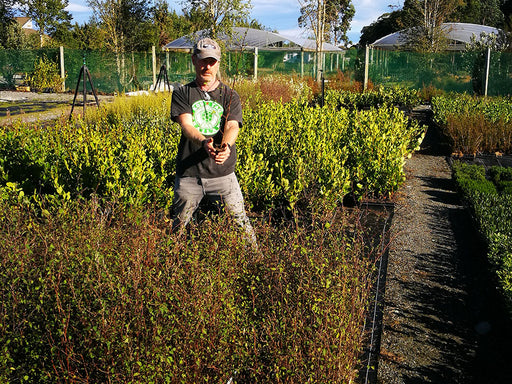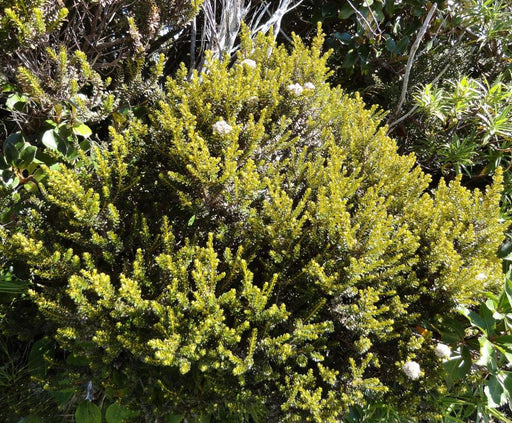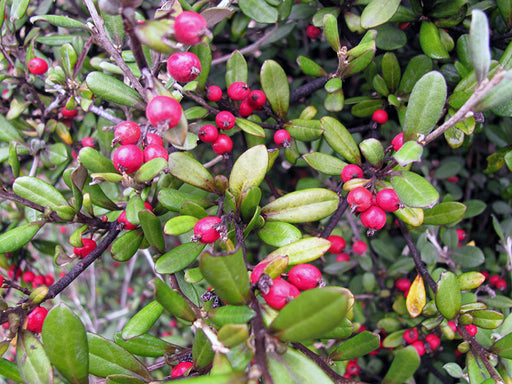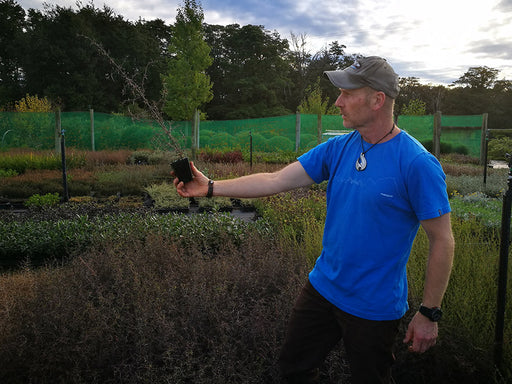Why Alpine Sites Matter — and Why Choose Natives
Alpine sites — such as high‑country hills, subalpine slopes, rocky scree, or exposed mountainous terrain — present a unique and challenging environment for plants. Conditions include:
-
Cold temperatures including frequent frosts and possible snow or frost cover in winter, and night‑time freezes even in warmer seasons.
-
Strong winds and high UV / intense sunlight, often with little protection.
-
Thin, rocky or well‑drained soils that are often nutrient-poor or low in organic matter.
-
Short growing seasons — alpine plants must grow, flower and set seed in a limited warm period.
Many exotic garden plants struggle under these conditions, but a range of New Zealand native plants evolved precisely for alpine or subalpine environments. They are often low-growing or cushion-forming, with compact growth, hardy, frost-resistant foliage or protective leaf coatings, and adapted root systems to establish in shallow or rocky soils. Choosing these natives helps create a resilient, low-maintenance alpine garden or rock‑garden that thrives in mountain‑like conditions.
Choosing What to Plant: Match Plants to the Alpine Site Type
Depending on the nature of your alpine (or alpine-style) site — rocky slope, tussock grassland, boggy alpine wetland, or scree — different native plants work best. Here are site-type breakdowns and suitable native plants.
Alpine Scree & Rocky Slopes
 Challenges: thin, rocky soil; very well-drained; exposure to wind, sun and frost; little moisture retention.
Challenges: thin, rocky soil; very well-drained; exposure to wind, sun and frost; little moisture retention.
Good native plant choices:
-
Leptinella ‘Platt’s Black’ — these form compact, ground‑hugging mats that resist wind, conserve moisture, and hold onto soil in rocky ground.

-
Olearia phlogopappa ‘White Gem’ is a compact, dense, small shrub renowned for its masses of soft white daisy flowers in spring. Tolerant to frost, wind, and poor soils, adding structure and greenery even in exposed, rocky sites.

Alpine Tussock Grasslands & Slopes
 Challenges: cold, windy environment; thin or free‑draining soils; wide temperature variation; need for soil stability and erosion resistance.
Challenges: cold, windy environment; thin or free‑draining soils; wide temperature variation; need for soil stability and erosion resistance.
Good native plant choices:
-
Carex comans ‘Frosted Curls’ — creates movement and texture in the garden, making it an excellent choice for modern landscapes, mass planting, borders, and containers.

-
Chionochloa Flavicans — adds fine texture and movement to native or contemporary gardens and performs well in exposed or dry conditions.

-
Carex comans (Common Sedge) — useful for stabilising soil, adding texture, and tolerating alpine conditions.

Alpine Wetlands, Bogs & Moist Pockets
 Challenges: cold, potentially damp or boggy ground, variable drainage, exposure to wind or cold air.
Challenges: cold, potentially damp or boggy ground, variable drainage, exposure to wind or cold air.
Good native plant choices:
-
Chionochloa rubra — ideal for naturalistic planting, restoration projects, or as a sculptural feature in native gardens, this hardy grass thrives in a wide range of conditions, including wind and frost.

-
Phormium 'Dark Delight' — smaller flax variety adapted to cold and wind, useful for structure and architectural interest even in alpine-ish wet zones.

Mixed Alpine Gardens (Rock Gardens, Rocky Flats, Alpine‑style Home Gardens)
 Good for ornamental plantings, alpine-style gardens or rock gardens on low-altitude but alpine‑inspired sites. Suitable native choices include:
Good for ornamental plantings, alpine-style gardens or rock gardens on low-altitude but alpine‑inspired sites. Suitable native choices include:
-
Leptinella pyrethrifolia — a hardy, low-growing native groundcover prized for its finely divided, feathery foliage that thrives in cool, open conditions

-
Olearia haastii — Its compact, bushy form and unique leaf texture make it an excellent choice for rockeries, or native plantings where texture and subtle colour are desired.

Signature Alpine Native Plants
Here are some of the most reliable and versatile native plants for alpine conditions — often used in alpine gardens, rock‑gardens or high‑country landscaping:
-
Poa cita (Silver Tussock) — hardy tussock grass that tolerates cold, wind, and poor soils; great for slopes or alpine meadow‑style plantings.

-
Chionochloa rigida (Snow Tussock) — snow‑adapted tussock grass with strong wind and cold tolerance, ideal for high‑country grassy areas.
-
Phormium cookianum (Mountain Flax / Cook’s Flax) — smaller, hardy flax for alpine conditions; useful for structure and form in rock gardens or exposed sites.

-
Hebe sutherlandii — compact shrubs suited to harsh alpine environments, providing hardy foliage and seasonal interest.

-
Leptinella squalida — cushion‑forming groundcovers for rocky slopes, scree, or rock gardens, binding soil and resisting exposure.

-
Hebe odora — compact shrubs suited to harsh alpine environments, providing hardy foliage and seasonal interest.

-
Carex secta (Makura) or other alpine sedges — for wetter alpine zones or boggy conditions, with tolerance for cold water‑retentive soils.
Practical Planting & Care Tips for Alpine Conditions
-
Soil & Site Preparation
-
Alpine natives usually prefer well‑drained, lean, rocky or gravelly soils, sometimes with minimal disturbance. Overly rich or water‑retentive soils can be detrimental.
-
For home-garden alpine plantings or rock gardens, mimic natural alpine soils — mix gravel, coarse sand or small stones, possibly with a little lean compost, to improve drainage while maintaining the lean structure alpine natives prefer.
-
Avoid heavy mulches — alpine plants often fare better with bare or stony soils where drainage and airflow are good.
-
-
Planting Time & Weather Considerations
-
Ideal time to plant is late spring to early summer, once the ground has thawed and frost risk is reasonably reduced, giving plants the warm season to establish before next winter.
-
If planting in autumn, allow for establishment when weather is milder, but ensure plants are properly hardened off before cold sets in.
-
-
Protection & Micro‑habitat Creation for Young Plants
-
Use rock placements, gravel mulch or temporary windbreaks to shelter young plants from harsh wind, frost, or sun exposure while they establish.
-
In rock gardens or alpine beds, embed plants in crevices or among stones — this mimics natural alpine microsites and helps with drainage, protection, and root anchoring.
-
-
Watering & Moisture Management
-
Alpine natives generally dislike waterlogging — ensure drainage is excellent.
-
During dry spells, occasional watering may help establishment (especially early years), but avoid overwatering which can cause rot or frost damage.
-
-
Spacing & Plant Grouping
-
Allow space for tussocks or cushion plants to expand naturally — overcrowding can reduce airflow, increase humidity, and risk rot or fungal issues.
-
Mix plant types (cushion plants, tussocks, shrubs) to mimic alpine communities — this helps stabilize soil, create wind buffering, and provide visual diversity.
-
-
Long‑Term Benefits & Maintenance
-
Once established, alpine natives are extremely low maintenance, generally tolerant of frost, wind, poor soils and exposed conditions.
-
They can stabilise slopes, prevent erosion, and create durable, self-sustaining alpine‑style landscapes or rock gardens.
-
Their compact growth, interesting textures and seasonal flowers provide year-round interest in gardens, especially in rock‑garden, courtyard or high‑country settings.
-
They support native biodiversity, offering habitat or shelter for alpine insects, invertebrates and specialised fauna adapted to high‑country conditions.
-
Planning Your Alpine Garden (Anywhere in NZ)
-
Survey Your Site Carefully
-
Consider altitude (or if using alpine plants in lower altitude rock‑garden), exposure, soil type, drainage, and likely frost or wind exposure.
-
If in lowland home garden but wanting alpine‑style planting, pick a well‑draining, sheltered spot, or build raised rock beds for better drainage and exposure control.
-
-
Select a Suitable Mix of Plant Types
-
Combine cushion plants, tussocks, small shrubs and groundcovers to reflect natural alpine plant communities.
-
Choose plants for different micro‑habitats: rocky pockets, open slopes, wet hollows or gravelly patches — this helps diversify functions (soil stability, moisture retention, shelter, visual interest).
-
-
Prepare Soil & Plant Thoughtfully
-
Use a gritty, free‑draining soil mix or gravelly substrate.
-
Plant in late spring / early summer if possible; provide protection for young plants if exposed.
-
-
Allow Room for Growth
-
Space plants generously to avoid crowding and allow natural expansion.
-
Use rock or gravel mulch to mimic alpine conditions and help with drainage, airflow, and root stability.
-
-
Establish, Then Step Back
-
Water as needed during establishment, but avoid over-watering.
-
Once established, alpine natives generally prosper with minimal care — little to no irrigation, no heavy feeding, and little maintenance.
-
-
Enjoy a Resilient, Alpine-Inspired Garden Year‑Round
-
With proper planting and care, you’ll have a durable, low-maintenance alpine garden or rock garden, offering texture, seasonal interest and resilience.
-
Over time, as plants mature, the garden becomes more stable, self-sustaining, and reflective of New Zealand’s native high‑country landscapes.
-















